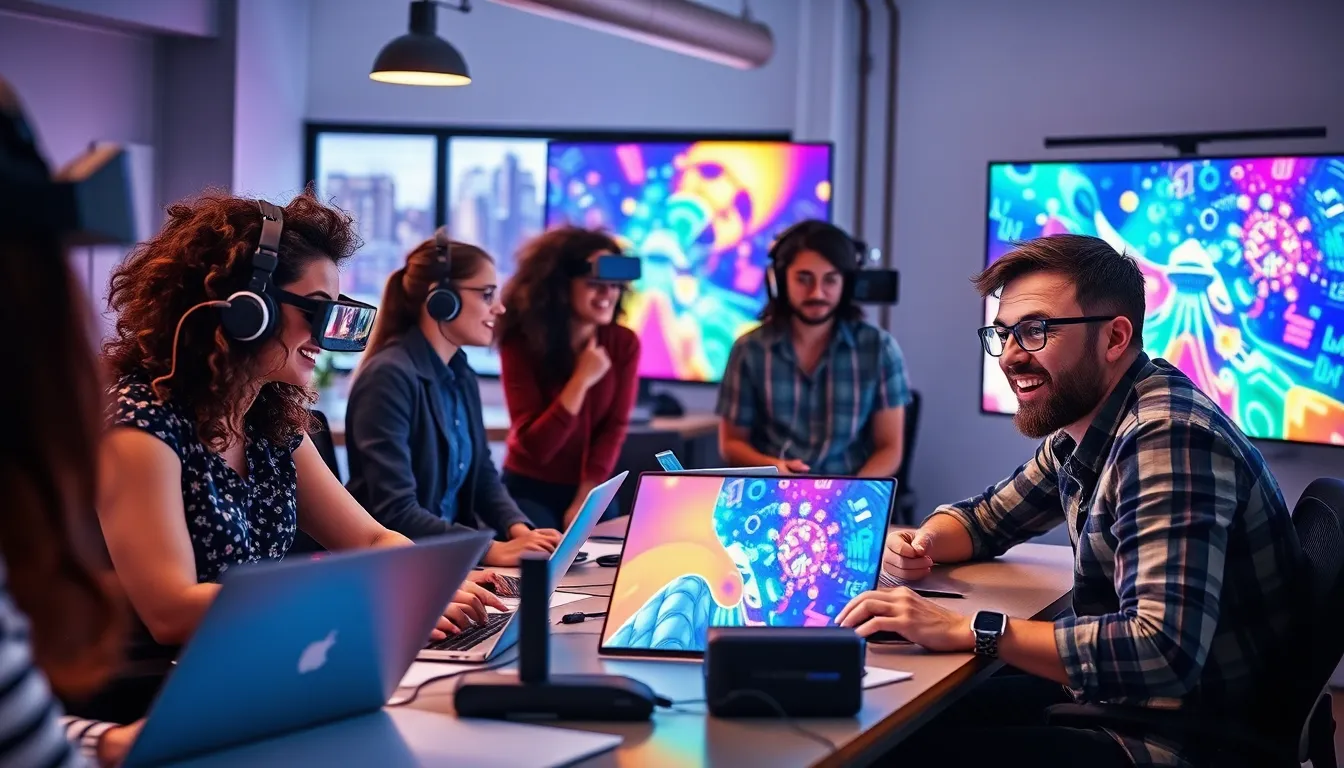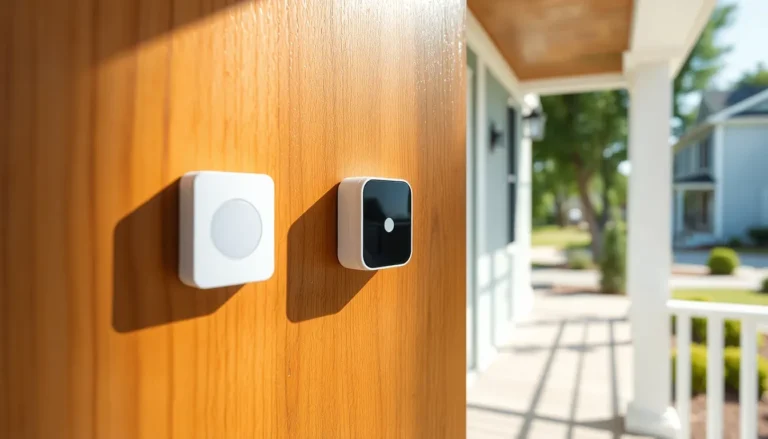Table of Contents
ToggleImagine stepping into a world where your wildest ideas leap off the screen and dance around your living room. That’s the magic of AR content creation. It’s not just for tech wizards or gaming enthusiasts anymore; it’s for anyone who wants to sprinkle a little extra excitement into their projects. Whether it’s for marketing, education, or just plain fun, AR opens up a universe of possibilities.
Overview of AR Content Creation
Augmented reality content creation engages a wide range of users, from artists to marketers. The process combines digital elements with the real world, enhancing experiences seamlessly. Various tools and platforms simplify AR content development, making it accessible without requiring extensive technical skills. Software like Spark AR and Adobe Aero enable creators to design AR visuals with minimal resources.
AR content can elevate marketing campaigns by providing interactive ads or immersive product demonstrations. For instance, brands use AR to allow customers to visualize products in their environments before making purchases. Education benefits significantly, with AR transforming lessons into interactive experiences, making complex subjects easier to comprehend.
Creators can leverage AR to tell stories in innovative ways. By integrating animated characters or digital overlays, they captivate audiences more effectively than traditional media. Businesses implementing AR experience increased engagement, as users interact with content rather than passively consuming it.
Collaboration among teams fosters creativity in AR projects, enabling diverse ideas to shape content. As educators and marketers explore AR’s potential, they drive further interest and innovation in this emerging field. Adopting AR content creation can provide a competitive edge, as it differentiates brands and enhances user experiences.
AR technology continues to evolve, offering new capabilities regularly. Developers focus on improving user interfaces and refining the development process, resulting in enhanced AR tools. The future of AR content creation holds immense potential for growth, paving the way for more engaging and accessible experiences across various industries.
Tools for AR Content Creation

Creating AR content requires specific tools that simplify the process. Various software options and hardware requirements ensure seamless integration of digital elements into the real world.
Software Options
Numerous software applications support AR content creation. Spark AR Studio empowers users to develop engaging experiences for Facebook and Instagram. Adobe Aero provides intuitive interfaces for designing immersive AR without coding knowledge. Unity, a popular game development platform, offers AR Foundation, which allows for cross-platform support. Other valuable tools include Vuforia and Blippar, both designed for interactive AR applications. Each software option caters to different needs and expertise levels, enabling creators across industries to bring their visions to life.
Hardware Requirements
Certain hardware specifications enhance AR content creation. Mobile devices equipped with ARKit or ARCore facilitate AR experiences on smartphones and tablets. Laptops with strong graphics processing units (GPUs) significantly improve performance during development. Additionally, VR headsets may enhance interactive elements for immersive AR experiences. High-definition cameras enable precise mapping and tracking of real-world environments, making them essential for accurate content. Using the right hardware ensures that creators can deliver high-quality AR experiences that resonate with audiences.
Techniques in AR Content Creation
AR content creation utilizes various techniques to enhance user engagement and experience. Two primary techniques are 3D modeling and animation with interactivity.
3D Modeling
3D modeling forms the foundation of most AR experiences. Artists create detailed and lifelike digital representations of objects or environments. Tools like Blender and Maya allow creators to design intricate models that integrate seamlessly into real-world settings. Utilizing accurate scaling and textures ensures that the digital elements complement their physical counterparts. This attention to detail captivates users and makes their experiences more immersive.
Animation and Interactivity
Animation and interactivity play crucial roles in AR. They breathe life into static models, transforming them into dynamic elements that users can engage with. Implementing frameworks like Unity boosts the interactivity level, allowing for responsive animations that react to user interactions. Creators craft various scenarios where users can manipulate the digital environment, fostering a deeper connection. Enhancing storytelling through animations improves user retention and creates memorable experiences.
Best Practices for Effective AR Content
Effective AR content creation requires a strategic approach that enhances user experience. Prioritizing user interaction boosts engagement significantly. Designers should focus on intuitive interfaces, ensuring users can navigate with ease.
Creating high-quality 3D models uses accurate scaling and detailed texturing, which enhances immersion. Artists should utilize tools like Blender or Maya to achieve professional results. Addressing lighting and shading in 3D models also improves realism.
Incorporating interactivity elevates the AR experience. Allowing users to influence content adds a layer of engagement. Unity and other frameworks enable creators to develop responsive animations that react to user actions.
Ensuring compatibility across devices is vital for reaching a broader audience. Content should function smoothly on both iOS and Android devices. Testing AR experiences on multiple platforms helps identify potential issues before launch.
Focusing on storytelling enhances viewer retention. Engaging narratives keep users invested and lead to memorable interactions. Integrating multimedia elements, such as audio and video, can further enrich the storytelling experience.
Keeping feedback loops open helps refine AR content continuously. Gathering user feedback informs necessary adjustments, leading to improved experiences. Regularly updating content based on user experiences keeps creations fresh and relevant.
Measuring engagement metrics provides insights into effectiveness. Tracking user interactions and time spent informs future content decisions. Analysis of data helps identify successful elements and areas for improvement.
Using AR consistently in marketing campaigns reinforces brand identity. Engaging, interactive experiences amplify messages. Lasting impressions arise from AR campaigns that blend creativity with strategy.
AR content creation stands at the forefront of innovation. Its ability to blend digital and real-world elements opens up endless possibilities for creators across various fields. By leveraging accessible tools and techniques, anyone can harness the power of AR to enhance their projects.
As businesses and educators embrace this technology, the potential for engagement and interaction grows exponentially. The emphasis on user experience and storytelling ensures that AR not only captivates audiences but also leaves a lasting impact.
With ongoing advancements in AR technology, the future looks bright for creators ready to explore new horizons. The journey of AR content creation is just beginning, and those who dive in will undoubtedly reap the rewards of this dynamic medium.







